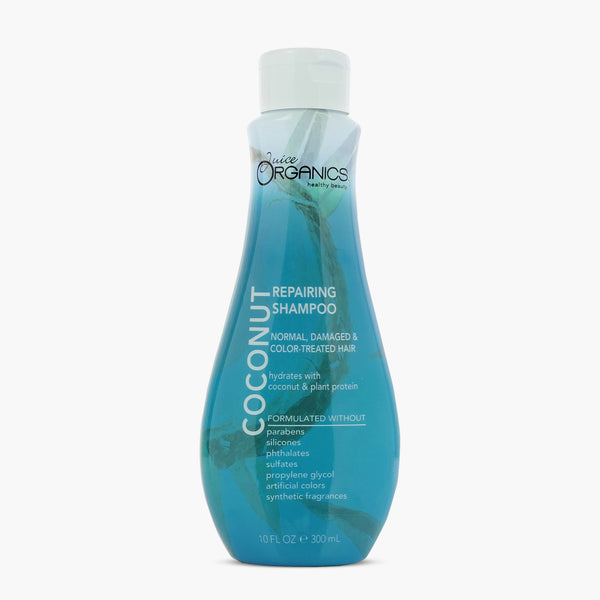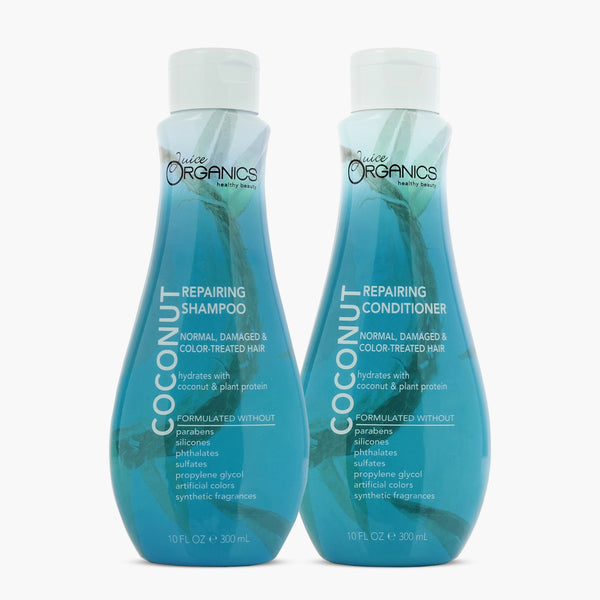There are a lot of mixed opinions out there about the “right” way to do your makeup, especially when it comes to your base layer. Some people live by concealer goes first, but others are ready to die on the hill of foundation before everything.
Today, we’ll finally put this debate to an end.
In this article, we’ll lay out all the information: the reasons you should use concealer first, the reasons you should use foundation first, how to apply each of these products, and which method might be best for you, depending on your skin type.
How To Apply Concealer
Concealer is a creamy makeup product designed to cover skin imperfections, such as blemishes or dark circles. It’s thicker than foundation, meaning it provides more coverage than your average skin tint.
You can put concealer anywhere on your face that you need additional coverage, but the most common areas are under your eyes and on the high points of your face, such as your chin and forehead.
When it comes to concealer, a little goes a long way, so start with a small amount and add more product as you go for additional coverage.
When To Apply Concealer First
There are three main reasons why someone might apply concealer before foundation.
1. To Conceal Blemishes
Concealer is a much thicker product than foundation, meaning it provides more coverage. If you have acne-prone skin or are just experiencing a flare-up of hormonal and stress-induced blemishes, applying concealer first can give you that extra bit of coverage needed to blot out your breakout.
2. For a Smoother Complexion
Because concealer is more pigmented than foundation, it has a higher blurring capacity than foundation. When you apply concealer first, you start your makeup with a stronger base, which can create a more even-looking skin look.
3. To Cut Back on Foundation Usage and Product Waste
If you’re someone who finds that foundation makes your skin look cakey or you just prefer a barer skin look, then starting with concealer can help reduce the need for foundation.
A concealer-first makeup routine means you can use less foundation in the next step, or if you’re happy with concealer alone, skip the foundation altogether!
How To Apply Foundation
Foundation is the classic base-layer makeup product. It’s designed to smooth out your skin for a more even color, which is why matching your foundation shade to the color of your skin is so important. Think of foundation as “your skin, but better.”
Foundation is thinner than concealer because it’s meant for all-over coverage (not just one part of your face, like with concealer). Using either a damp beauty blender or a foundation brush, apply the product in a thin layer over your entire face… and don’t forget to blend down your neck for a consistent color!
When To Apply Foundation First
There are three main reasons why someone might apply foundation before concealer.
1. To Color Correct
Foundation is designed for full-face coverage, so it’s perfect for color-correcting your skin. When you start with foundation, you can better conceal large swaths of discolored skin for a more consistent color.
2. For More Coverage
Even though concealer is thicker than foundation, foundation is best for all-over coverage. The makeup product is thin enough to avoid creasing (like concealer does) when applied from your hairline to youor jawline.
3. Prevent Patchiness
If you apply concealer first but fail to set it into place with a pressed powder, the product can move around when you then layer your foundation on top of it. This can cause the brighter concealer color to shift into areas it shouldn’t be, making your skin look patchy.
Applying foundation first avoids this problem since foundation, unlike concealer, is meant for every part of your skin.
Should You Use Concealer or Foundation First?
Now that you’ve weighed the pros and cons, it’s finally time to decide for yourself if you should start your makeup routine with concealer or foundation first.
Ultimately, it’s up to you and your skin needs, but there are a few things to be mindful of:
- For oily or aging skin, apply concealer first. These skin types tend to need more concentrated coverage to hide blemishes and are particularly prone to makeup creasing. By starting with concealer, you can achieve smoother-looking skin.
- For dry skin or pigmentation issues, apply foundation first. These skin types need more all-over coverage to even out skin discoloration. By starting with foundation, you can blur out your imperfections for a more even skin tone.
What Skincare Routine Is Best Before Makeup?
Whether you decide to reach for concealer first or choose to begin with foundation, every makeup routine should start with the same thing: skincare.
Skincare is the foundation of your foundation… and your concealer, and everything else in your makeup routine! Without a smooth surface to apply your products to, your makeup can turn out cakey, crease easily, or just look overall not its best. This makes skincare the most important step in your makeup routine.
The best skincare routines are customized to your specific skin needs. Dry skin will need denser moisturizers, and oiler skin can really benefit from double cleansing, while combination skin might need a mixture of both. However, when it comes to skincare, everybody’s routine should include the same core steps:
Step 1: Cleanse
Before you can start applying your favorite makeup or skincare products, you need to start with a fresh face. In other words, you need to clean your skin.
Cleansers remove all of the dirt, debris, excess oil, and grime that build up on your skin throughout the day. These pollutants, if left to their devices, can sink into your pores and cause all kinds of problems for your skin, including breakouts and irritation.
This kind of skin texture can make makeup application tricky, so it’s important to avoid unnecessary flare-ups before starting with concealer or foundation.
Step 2: Tone
The second step of every skincare routine is to tone. This step is often overlooked, but it’s one of the most important ones. To understand exactly why toners are so vital for your skin, we have to get into a bit of chemistry.
Your skin has a natural pH of about 5.5, and water has a natural pH of 7. This means that your skin is more acidic than water. However, when you wash your face, the water you use raises your skin’s pH, which can result in dangerous complications for your complexion.
This is where toner comes in. The role of toner in your skincare routine is to bring your skin’s pH back down to normal levels. By bringing your skin back into balance, you can avoid damage to your skin barrier, increased dryness, and skin irritation.
Step 3: Treat
Once you’ve cleansed and toned your skin, the fun part of skincare can begin. The third step in every good skincare routine is treatment.
Skin treatments are your opportunity to tailor your skincare routine to your specific skin needs and goals. There are serums and creams available for almost every skin concern, and you can use as many of them as you need to create the perfect cocktail of care for your complexion.
Here are some of the most popular skin treatments at Juice Beauty for each skin type:
- Dry Skin: GREEN APPLE Brightening Eye Cream
- Oily Skin: STEM CELLULAR® SuperGrape Youth Renew Serum with Hyaluronic Acid
- Combination Skin: PREBIOTIX™ C-Boost72 Hydrating Whipped Cream 20% Vitamin C Niacinamide Glow Complex
- Sensitive Skin: STEM CELLULAR® Vinifera Replenishing Oil + Primer
- Breakout-Prone Skin: BLEMISH CLEARING™ Salicylic Acid Serum
Step 4: Moisturize
After nourishing your skin with your favorite skin treatments, it’s time to lock in all that care with a layer of hydration. The next step in your skincare routine is to moisturize.
In the same way that a toner balances pH levels after you wash your face, a moisturizer helps balance your skin’s natural oils.
Cleansers are effective at removing all the grime and excess oil from your skin, but they struggle to distinguish the good oils from the bad. Your skin relies on healthy oils like sebum to keep your skin barrier strong, so it’s important to replenish these oils whenever you wash them away — and moisturizing is the best way to do that.
Step 5: Protect
Before you jump to makeup, there’s one last step you need to take to wrap up your skincare routine. That’s right, we’re talking about sunscreen.
Even in the winter, sun protection is a must. Your skin is vulnerable to sun damage from harsh UV rays during every season, not just while tanning at the beach in the summer months.
You can get a sunburn while sledding down a snowy hill or taking a winter walk through your neighborhood. Ultraviolet radiation can also bleed through windows, so you can even get a burn while inside!
Dermatologists recommend that everybody incorporate a broad-spectrum protection sunscreen with an SPF of at least 30 into their daily skincare routine.
One of the most convenient ways to add sun protection to your everyday makeup routine is to use products that can double as sunscreen. Juice Beauty offers a variety of lotions, color-correcting creams, and tinted moisturizers that have high sun protection factors to keep your skin safe and smooth all day long.
- PREBIOTIX™ SPF 45 Glow Daily Multi-Tasking Moisturizer: This lightweight moisturizer melts into your skin for all-day hydration — and all-day sun protection.
- STEM CELLULAR® CC Cream Zinc SPF 30: This color-correcting cream is soft on skin for a radiant and glowing complexion that is safe from sun damage.
- SPF 30 Tinted Mineral Moisturizer — BB Cream in Sand: This tinted moisturizer is a bb cream, a.k.a. a skincare-makeup hybrid that protects against sun damage and delivers the most luxurious lightweight coverage for stunning skin.
The Secret to Flawless Skin
Your skin is a complex organ that is constantly absorbing and secreting compounds that directly influence the look and feel of your skin. Everything that touches your skin impacts your complexion, so pay attention to what goes on your face.
Whether a concealer-first makeup routine or a foundation-first one is the right one for you, it’s important to remember that beautiful skin always starts with the same thing: skin health. For a complexion that feels as good as it looks, remember to start your makeup routine with skincare.
Sources:
[Normal pH value of human skin] | National Library of Medicine
Sebaceous Glands: Function, Location & Secretion | Cleveland Clinic
5 Sneaky Ways You're Being Exposed to the Sun's UV Rays | The Skin Cancer Foundation
Sunscreen FAQs | American Academy of Dermatology Association\






